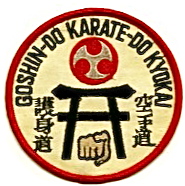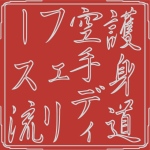In May, 1945, General George S. Patton, Jr. arrived at the Imperial Spanish Riding Academy. Modern equitation at the Academy emphasized the form of horsemanship over the practical military applications of the movements of rider ad horse. The General reflected upon the idea of preserving the aesthetics of the movements over their military applications.
. . . it is probably wrong to permit any highly developed art, no matter how fatuous, to perish from the earth – and which arts are fatuous depends on the point of view. To me the high-schooling of horses is certainly more interesting than either painting or music. (See Endnote # 1)
I have had occasion to reflect on the fatuous nature of the arts. For several decades now I have held the point of view that the art of kata (Kata-jitsu) is certainly more interesting than any other art, including “the high schooling of horses, painting or music.”
Much like any art, specific kata within an overall karate-do curriculum can be judged as fatuous. The arbiter of the viability of the kata is the senior ranking black belt of either a specific karate-do system or association. Invariably, once this arbiter adjudges a kata as fatuous, he or she stops practicing the kata. As a result, the kata is no longer taught to the lower ranks. Inevitably, the kata ceases to be a “required” kata within the system. In the end, the kata has perished from the system or association solely due to the personal penchant of one practitioner.
My devotion to and love of kata has compelled me to attempt to recreate certain lost kata of the Goshin-Do Karate-Do (GDK-D) Kyokai established by Hanshi Frank Van Lenten. It is the tree trunk upon which not only our own branch of Goshin-Do Karate-Do had grown, but also several other branches of karate styles. To set the Kyokai apart from other Okinawa-based styles of karate-do, traditional kata were modified by Hanshi Van Lenten and incorporated into his GDK-D Kyokai. Hanshi Van Lenten engaged in a period of protracted adjustment as to which kata would be included within the Kyokai. This resulted in many kata being added and removed.
Additionally, as members divorced themselves from the GDK-D Kyokai, they were no longer subject to kata being imposed upon them by Kyokai (and Hanshi Van Lenten’s) requirements. Being freed of this imposition, their personal inclinations, emotions and predilections determined the kata to be required of their students. Kata that they deemed fatuous were abandoned. Others, were added. In this manner, new branches were created from the original Kyokai tree trunk.
The death bell tolled in 1983 when Hanshi Van Lenten disbanded the Goshin-Do Karate-Do Kyokai. Even he once and for all abandoned the kata he created. In essence, these unique adaptations of the traditional kata “perished from the earth” — until now.
I have been extremely fortunate to have come into possession of the means of recreating these lost kata. The basis for my recreation included notes, text, instructional photographs, and video of Hanshi Van Lenten. (See Endnote # 2) Over the past few years, I have scrutinized these archival sources and practiced the kata to the best of my ability and interpretation. It is my honor and privilege to share my recreation of these abandoned kata with you. Please note that each video below contains all archival material utilized.
Why bother taking over two years to resurrect these abandoned kata? To modify the General’s observation, it is probably wrong to permit any highly developed KATA, no matter how fatuous, to perish from the earth.
Sunsu Kata; Not only does this video feature footage of Hanshi Van Lenten performing his version of this hallmark kata of Isshin-Ryu Karate-Do, it also shows Shimaboku, Tatsuo Sensei’s recognition of Hanshi Van Lenten as a Ju-Dan, 1oth degree black belt.
Jion Kata: A very rare version of the traditional kata recreated in a pleasing aesthetic environment.
Jitte Kata: A very rare version of the traditional kata recreated in a pleasing aesthetic environment.
Kanto Kata – created by Hanshi Van Lenten at the request of his various Okinawa Sensei to symbolize his GDK-D style. The kata and style were approved by Hanshi’s several Okinawa Sensei as being Okinawa-based. While Kanto Kata remains within our kata syllabus, it is “The” defining kata of Hanshi Van Lenten’s GDKD style and is therefore a “rare” kata.
Respectfully submitted,
Sensei John Szmitkowski
 For a refreshing and innovative discourse on kata and bunkai, please feel free to visit Sensei John’s Kata Laboratory using this convenient link: http://senseijohn.me/category/kata-laboratory/
For a refreshing and innovative discourse on kata and bunkai, please feel free to visit Sensei John’s Kata Laboratory using this convenient link: http://senseijohn.me/category/kata-laboratory/
 For details on how to “cyber-participate” in Sensei John’s most recent group Sanchin Kata session, please use this link: http://senseijohn.me/category/a-sanchin-pilgrimage/
For details on how to “cyber-participate” in Sensei John’s most recent group Sanchin Kata session, please use this link: http://senseijohn.me/category/a-sanchin-pilgrimage/
ENDNOTES:
1. General George S. Patton., Jr., War As I Knew It: The Battle Memoirs of “Blood ‘N Guts”, (Bantam Books, 1980), p. 311.
2. My sincerest “Thank-you” to Shihan Thomas DeFelice (Ku-Dan, Karate-Do No Hanshi, Goshin-Do Karate-Do) for providing the text and photographs of Jion and Jitte Kata, Hanshi Jerry Thompson (Arts Of Self-Defense), Shihan Ed DiNardo (Hachi-dan, Arts Of Self-Defense, New Jersey and Arizona) and Kyoshi Tom Van Tassel (Nana-Dan, American Center For Martial Arts, New Jersey) for providing the vast wealth of vintage films of Hanshi Van Lenten.



Reader’s Comments